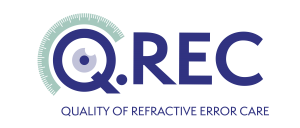Optical Services Recruitment
Optical service inclusion/exclusion criteria
Inclusion criteria
- Provide refractive error services; both refraction and dispensing services
Exclusions
- Optical service owner/manager opted out of the study
- Personally known to the USP
- Optical service has staff working across multiple services and one that has already been selected
- Optical service that has a centralised patient record system with at least one other service and has already been selected
Once a comprehensive list of optical services has been compiled, all services should be sent a Letter of Invitation accompanied with the Participant Information Statement and Withdrawal Form. Once the information is received, a minimum of two weeks should be provided to services to allow for them to ask questions and/or withdraw (i.e. no USP visits, but this time period is a good opportunity to conduct optometrist and USP training). For all the services that do not return a Withdrawal Form, they can be selected to be part of the study by using a simple randomisation technique.
If no consent is sought from optical services, no waiting period for data collection is required. If an opt-in approach (where services sign a consent form) is chosen, then we recommend similar waiting periods as the opt-out approach to minimise USPs being detected.
USP Recruitment
The ideal USP is someone with refractive error and no other ocular complications, is detail-oriented, capable of retaining reasonable volumes of information, is prepared to undergo training and be undercover when visiting optical services. If REDCap data collection is to be used, we also recommend that the USP are familiar with using smartphone mobile devices.
Including emmetropic USPs is useful to assess the effectiveness of quality of care, where optical services acknowledge that spectacles would not benefit the patient and would not recommend that upon them.
For each refractive error type, we recommend recruiting more than one USP. Training more USPs shares the demand and workload of data collection, but also reduces the potential of having individuals that are more challenging to refract that underestimates Q.REC.
USP inclusion/exclusion criteria
USP Inclusion criteria:
- Age 18 years or above
- Fluent native speaker of the primary language of the district
- Good ocular health
- Either in need of spectacle correction or emmetropic
USP Exclusion criteria:
- Prior refractive eye surgery
- Eye surgery within the past 3 months
- Manifest or intermittent strabismus
- Amblyopia
- An ocular or health condition that can cause variable spectacle prescription. Examples include (but not exhaustive): latent hyperope – where the amount of accommodation masks the hyperopia varies, keratoconus, pellucid’s marginal degeneration or other irregular corneal conditions, ocular surface disease, hydrops, glaucoma, binocular vision disorders, uncontrolled diabetes
- Prior training in refraction or currently an eye care provider student
- Provides a variable spectacle prescription
Screening and ocular health assessment
The screening is conducted by an eye health professional to assess whether the USP passes the inclusion and exclusion criteria for recruitment. As a variety of refractive error types are desired, assessing a potential USP’s current spectacles, a quick retinoscopy or an autorefraction will suffice for the screening.
Retinoscopy is the only technique of the three capable of detecting keratoconus, except if your autorefractor is combined with a corneal topographer.
The ocular health examination includes an anterior and posterior eye examination. Anterior eye examination should be conducted with a slit lamp, and the posterior eye examination can be conducted dilated or undilated with direct or indirect ophthalmoscopy techniques.
Successful recruitment of USPs
Once potential USPs have been screened and identified as suitable, all should be invited to participate and provide consent to ensure they are clear on what being a USP involves, what the benefits and risks are, and information on data privacy.
We have developed electronic consent forms in REDCap. The content of the consent forms should match the consent forms submitted to the HREC/IRB and therefore might need to be edited if USP consent is to be completed electronically.
Generally a copy of the signed consent form should be provided to the USP. If REDCap for electronic signing of the consent forms is used, download each copy manually and email this to the USP. This will allow them the opportunity to provide written withdrawal if they choose to. If any USP decides to withdraw verbally, this should also be considered acceptable. However, please check with the HREC/IRB that this is an appropriate procedure.
